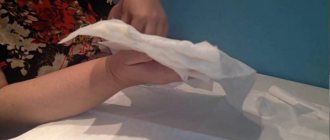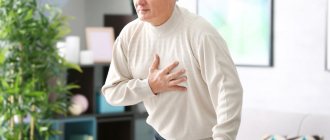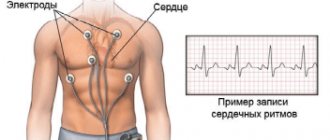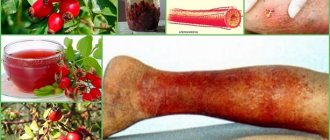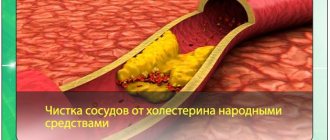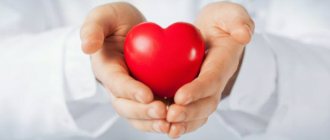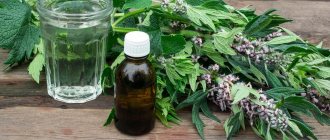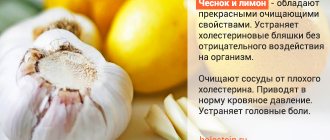Stroke is one of the serious and dangerous diseases that very often occurs unexpectedly in a person.
The disorder can develop in just a few minutes, and a person who was healthy five minutes ago loses consciousness and lies motionless. With this disease, blood circulation in the brain is disrupted, and it often develops in older people.
In order for stroke treatment to be effective, it must first of all be comprehensive. Expensive drugs are not always effective in fighting the disease; many people managed to improve their health using traditional medicine methods. In addition, these methods are less harmful to humans.
But it is worth noting that before resorting to traditional medicine, you need to consult a doctor and find out if there are any contraindications to the use of this or that remedy.
Herbal Recipes
Herbal medicine has managed to establish itself as an effective treatment in the fight against many ailments, including its use for the treatment of stroke.
Herbal infusions can be used not only to treat the disease, but also to prevent it. It is worth noting that sorceresses and healers have identified a lot of medicinal herbs; the most common recipes based on them will be presented below.
Treatment of stroke with sage herb
In order to restore speech, you need to drink a sage-based tincture. It is necessary to prepare a strong herbal infusion, leave the drink to infuse for an hour and take it at least three times a day, several sips.
To improve the condition of a sick person, you can prepare sage-based baths.
To do this, you need to pour three glasses of dry grass with 2 liters of boiling water.
Then you need to leave the broth for an hour and pour it into a warm bath.
Celandine to the rescue
Celandine is also effective for people who have had a stroke. Although it is a poisonous herb, it is effective for many ailments. Preparing a decoction based on this plant is very simple:
- add 1 tbsp to a glass of boiling water. a spoonful of herbs;
- leave the decoction for several hours;
- take three times a day, first for 1 hour. spoon gradually increasing the dosage to 2 tbsp. spoons at a time.
Decoctions based on other herbs
In order to improve the patient’s condition after a stroke, you can prepare a decoction based on the following herbs:
- plantain;
- yarrow;
- sagebrush;
- St. John's wort;
- calendula;
- eyebright;
- strawberries
To the mixture of herbs you need to add agrimony and walnuts. All herbs should be taken in the same ratio. The medicine must be boiled, cooled and taken as prescribed three times a day, 1/3 cup.
In order to normalize the functioning of the heart, you need to take tincture of gray jaundice. For a teaspoon of tincture you will need ½ cup of boiling water. After the decoction has cooled, it can be taken three times a day, a teaspoon.
If a sick person has paralyzed limbs, then an ointment prepared at home will help him. This remedy needs to be rubbed into the limbs twice a day, and it is easy to prepare.
To prepare it you will need bay leaves and pine needles. These ingredients need to be ground to a powder. They must be mixed in a ratio of 6:1. To measure you need to take 1 teaspoon. Add 6 tbsp to this mixture. spoons of butter.
What to do if you have a stroke? The neurologist has compiled simple instructions that can save you
Over the course of a year, more than 30,000 people have a stroke in Belarus. Only 10% of them return to normal life. Neurologist Sergei Marchenko tells how to identify a stroke and what needs to be done before it is too late.
What is a stroke anyway?
– This is an acute circulatory disorder in the brain, which is always a secondary disease. It does not occur in healthy people.
According to the mechanism of circulatory disorders, strokes are divided into ischemic (about 85% of all strokes) and hemorrhagic. In the first case, the vessel is blocked by a thrombus (embolus), in the second, the vessel ruptures. There is also a division of strokes according to severity, but even a mild stroke is a deadly disease.
Do these types have the same symptoms?
Stroke symptoms depend on the location in the brain, not the type of stroke. If blood circulation in the speech center is impaired, speech will suffer, and in the motor center, movements in the arm and (or) leg will be impaired.
How can you tell if a person is having a stroke?
A very simple test has been invented to detect stroke, which is recommended by all national and international protocols. It’s called “Face, Hand, Speech, Time,” and based on it, emergency personnel have the right to make a diagnosis of stroke.
Face: Ask the patient to smile or show teeth. With a stroke, noticeable asymmetry of the face occurs (the corner of the mouth “hangs” on one side).
Arm: The patient is asked to raise and hold both arms 90° in a sitting position and 45° in a supine position for 5 seconds. During a stroke, one of the arms drops.
Speech: Ask the patient to say a simple phrase. During a stroke, the patient is unable to clearly and correctly pronounce a simple phrase; his speech is unintelligible and slurred.
If there is at least one symptom indicating the development of a stroke, it is necessary to urgently call an ambulance - the sooner help is provided, the greater the chance of recovery.
Timing: It is very important to find out when the stroke occurred. You need to ask the person when he or others first noticed these violations. If a person cannot remember when they first noticed symptoms, we ask their loved ones when they last saw them without them.
There is the concept of a “therapeutic window” - the time when you can try to completely restore blood circulation. It refers to ischemic types of strokes, because when a vessel ruptures, you do not need to restore blood flow, but stop the bleeding and remove the hematoma.
The duration of the “therapeutic window” is no more than 6 hours. During the first four and a half hours, blockage of the vessel can be cured both with medications (i.e. using thrombolysis) and endovascular methods (using thrombus extraction) - that is, with the help of special devices that are inserted into the arteries of the brain and remove the blood clot mechanically. In the interval of 4.5–6 hours, only endovascular treatment is possible.
The success of stroke treatment depends entirely on the timing of seeking medical help. Unfortunately, if the symptoms are not very pronounced, people often wait for everything to go away on its own, but it doesn’t, and sometimes it only gets worse.
Can I use this test to determine if I have a stroke?
Certainly. If you realize that something is wrong with you, you can always smile at yourself in the mirror and see how symmetrical the smile is, evaluate your speech, try to hold both hands. But still, most often, strokes are diagnosed for someone. Relatives see that something is wrong with the person.
When a stroke occurs, what happens to the person at that moment? Does he faint and his condition deteriorate sharply?
All options are possible. When a large vessel is blocked, a person may lose consciousness because a large area of the brain is no longer supplied with oxygen. If the vessel is small, the symptoms may be subtle, but gradually become more pronounced.
Should all these symptoms occur during a stroke?
No. Symptoms can be all together, or just one of them: it all depends on how large the vessel is and what part of the brain is affected. In addition, it is important to remember the following nuances: the test only talks about the arm, but weakness may also be in the leg, and a person may develop coordination disorders.
The main thing: if your condition suddenly changes, do not wait, but immediately seek help! This applies not only to stroke; in medicine, a lot depends on time: it is difficult to successfully treat a surgical pathology when abdominal pain lasts a week, and for cardiologists to treat a myocardial infarction when the pain syndrome lasts more than 24 hours.
What can a stroke be confused with?
With diseases that cause the same symptoms. This could be a tumor, an injury, or an infectious lesion of the brain (encephalitis, meningitis). All these diseases are dangerous, and in any case they need to be treated, and not wait until they go away on their own.
These symptoms most likely will not go away on their own. And even if they disappear, you must go to the doctor. There is a concept of “transient cerebrovascular accident” - when neurological symptoms arise, but quickly pass because blood circulation is restored on its own within 24 hours. This is also a very dangerous condition, a harbinger of a full-blown stroke.
Is it possible to miss a stroke?
Can. The brain is responsible for everything in our body, but at the same time it has functionally insignificant zones: if a stroke occurs in one of them, the symptoms will be insignificant or completely unnoticeable. Such a stroke is often detected already in the form of old changes on brain tomograms.
How can I help someone who is having a stroke?
Call an ambulance by dialing 103. Afterwards, lay him down with his body elevated 30–45 degrees, ensure airway patency by freeing his neck from clothing and clearing the oral cavity of vomit and foreign objects, including removable dentures, in case of unconsciousness In case of patient's condition, he must be turned on his side to prevent saliva and vomit from entering the respiratory tract.
No other help should be provided: do not lower the pressure, do not give medications. Treatment for stroke depends on its type, and only a doctor can diagnose it.
What should I do if I have a stroke with speech impairment, and there is no one around?
If they are minor, try to make sure that the emergency medical dispatcher understands what you want. If that doesn’t work, try writing to someone you know and ask them to call you an ambulance.
What to do if a person has a stroke far from the city?
You still need to call an ambulance. Our entire country is divided into service zones; every location is assigned an ambulance substation, from where a team must arrive and provide assistance.
If it is completely out of the way and you understand that it will take a very long time to get there, it makes sense to load a person into a car and drive to the nearest town or hospital.
Currently in Belarus, active work is underway to organize regional vascular centers, which are designed to provide assistance to patients located in an approximately 70-kilometer zone, where both strokes and heart attacks will have to be treated using modern methods.
How does a stroke usually end?
Death, disability or recovery. Statistics on stroke outcomes have not changed for decades: 20–30% of patients die within a year, about 60% remain disabled in various groups, and only about 10% return to normal life.
If our fellow citizens began to seek help in a timely manner, fewer people would remain disabled.
About 60% of patients with strokes treated with thrombolysis or thromboextraction are discharged from the hospital with either no or minimal impairment - this does not take into account the rehabilitation period. This is why I am so happy about timely access to doctors: we have everything for treatment - knowledge, skills and technology.
What exactly are the consequences of a stroke?
Most often, the consequences are symptoms that could not be eliminated during treatment and rehabilitation. They depend on the size of the stroke and its location. In most cases, it is difficult to immediately predict the outcome of a stroke.
Are there any mental consequences?
Of course, they can be, and moreover, they often occur. A stroke is brain damage, you don’t even need to build logical chains here. For example, people with speech disorders sometimes become tense and overly active due to the fact that they are not understood and cannot express their thoughts. Unfortunately, sometimes people become inadequate.
What does recovery depend on?
Firstly, from the time of the patient’s presentation, from whether we were able to restore blood flow to the death of a large part of the brain. When a vessel is blocked by a thrombus (embolus), the area of the brain that is supplied only by this vessel dies in any case (without oxygen, the brain lives only 5-6 minutes) - this is the “stroke core”. The areas of the brain surrounding the “core”, which have adjacent blood supply not only from the damaged vessel, will experience oxygen starvation. And if we restore blood flow in time, they will return to their normal state and these areas of the brain will remain healthy.
Secondly, it depends on the diameter of the blocked vessel: the larger it is, the larger the stroke, the more severe the symptoms and treatment.
Only 30% of patients come to the “therapeutic window”, and half are patients with cerebral hemorrhage, who are treated completely differently, to whom thrombolysis is not applicable. Of these 30% in 2017, thrombolysis and (or) thromboextraction were used in only 4.2% of cases, that is, in every eighth. The rest are treated as usual, these modern methods are not applied to them: they arrive on time, but we find contraindications. In such cases, unfortunately, blood flow cannot be restored: people either die or remain disabled.
What should I do to fully recover?
Arrive at the hospital on time, undergo successful treatment and actively rehabilitate. Rehabilitation includes taking medications, physical therapy on the recommendation of a specialist, visiting a speech therapist, etc. By the way, the effectiveness of recovery is greatly enhanced by the support and help of loved ones. The attending physician will tell you and show you exactly how you can help; the main thing is to work with the sick person.
After a stroke, is it necessary to go to a psychotherapist?
Anything that needs treatment, any deviation in health, needs to be treated. If a person has developed disturbances after a stroke that have not gone away, there is no need to get used to them - this also applies to the psyche.
Is there a chance that the stroke will happen again?
Unfortunately, for those who have had a stroke, the risk of having another one increases many times over, especially in the first year. Further the risk decreases, but still remains high. According to various publications, recurrent stroke occurs in 30–50% of patients.
After treatment, it is imperative to follow secondary stroke prevention measures - this is taking medications, for many on a lifelong basis, qualitative lifestyle changes, and controlling the disease that led to the stroke.
What should I do to avoid having a stroke the first time?
To be healthy. But, unfortunately, over the years this does not work out, so primary prevention is the timely detection of chronic and other diseases that can lead to stroke. For this purpose, our country has a well-thought-out medical examination system: for each age, an examination plan has been developed that allows us to exclude diseases characteristic of it. It is free and accessible, the main thing is to get to the clinic, complete the prescribed examinations, and complete everything with examinations by the necessary specialists. There are many other dangerous diseases besides stroke, and they all need to be treated.
If there are no health problems, you need to eliminate smoking, alcohol abuse, start moving more and eat right.
What diseases cause stroke?
Diseases that occur in the vast majority of patients with stroke are arterial hypertension, cerebral atherosclerosis, heart rhythm disturbances, and diabetes mellitus. Smoking, drinking alcohol, being overweight, and having a sedentary lifestyle will all contribute to a stroke.
What most often triggers a stroke?
It is not always possible to say what caused a stroke. The body can adapt to changes for a long time, as long as they do not exceed the limit of its capabilities. An atherosclerotic plaque can grow for a long time, but sooner or later it blocks the vessel or, if it is unstable, breaks away from the wall and blocks it.
Most often, the “trigger” is a jump in blood pressure.
Does stroke depend on heredity?
If your grandmother had a stroke, it is not necessary that you will have one too. But there is a hereditary predisposition to chronic diseases that cause stroke. If your mom has hypertension, chances are you will have it too.
Does the disease depend on age?
Stroke occurs mainly in older people and those who have retired. But in recent years, there has been an increase in the proportion of patients of working age; modern diagnostic capabilities make it possible to more often detect this disease in young people.
Essential oils
Essential oils have a positive effect on the person and the entire body. It is best to take baths with added oils. One effective recipe is the following:
- mix a glass of milk with a few drops of essential oil (it is recommended to take ylang-ylang oil -2 drops and lemon balm oil -3 drops);
- take a bath at a temperature of 35-37 degrees;
- pour the product into the bath;
- take a bath for no more than 25 minutes;
- a course of such treatment consists of 10 procedures.
Ordering and purchasing natural remedies for stroke and pre-stroke conditions
You can purchase potions and rubs prepared according to folk recipes in the Russian Roots online store. Parcels with orders are sent to any region of the Russian Federation, and a courier delivery option is available for Muscovites. You can also choose and buy natural products for treating and restoring the body after a stroke in the Russian Roots herbal pharmacy chain.
Attention! All materials published on our website are protected by copyright. When re-publishing, attribution and a link to the original source are required.
Honey and milk are an inseparable pair
There are other methods for treating stroke. A product such as honey has managed to establish itself as an effective product. The recipe for making the product is extremely simple.
Mix a glass of linden honey, 5 ml of peppermint infusion and 60 ml of kombucha infusion. Mix all ingredients well and can be taken.
In order to prevent the development of a stroke, you need to drink a glass of milk with the addition of valerian tincture before going to bed. It is also recommended that sick people take tomato juice along with lemon juice.
Diagnosis of stroke
The main methods for diagnosing the disease are:
- examination of the patient, assessment of his general condition;
- UZP test (checking whether a person can smile, speak or raise his hand);
- CT is the most informative diagnostic method for hemorrhagic stroke; with the help of this study, stroke can be clearly differentiated from other pathologies;
- MRI – suitable for diagnosing the ischemic form of the disease; with the help of MRI, it is possible to examine in detail areas of ischemia in the brain, assess the degree of their prevalence and the condition of neighboring areas of the brain;
- echoencephalography in combination with lumbar puncture - performed if it is impossible to do a CT or MRI;
- lumbar puncture - allows you to differentiate stroke from other brain diseases;
- ECG - identifies possible cardiovascular diseases that could trigger the development of a stroke;
- blood test (general, biochemical, sugar).
Citrus fruits are the number one enemy of stroke
Citrus fruits are fruits with which you can quickly bring the patient’s condition back to normal. The most effective fruit can be called lemon.
In order to bring the sick person’s condition back to normal, you need to take the following medicine, which is especially effective after an ischemic stroke, as it cleanses the blood vessels:
- grind a kilogram of lemons in a meat grinder;
- add a kilogram of sugar to the mass;
- place the product in the refrigerator.
This medicine should be taken daily, one teaspoon at a time, preferably in the morning. For greater effect, in addition to this mixture, it is recommended to eat a clove of garlic.
Thanks to lemon, you can prepare another remedy to improve the patient’s condition:
- Peel ½ lemon, remove seeds;
- cut the fruit into small slices;
- mix lemon with pine decoction;
- let the drink brew for several hours;
- Take the drink ½ glass 2 times a day half an hour before meals.
Stroke, stroke treatment
Used to treat the consequences of a stroke : pine needles, rose hips, onions. lemon, walnuts, tangerine and raisins. garlic, olive oil, honey, lemon juice.
Treatment with folk remedies for stroke. The folk remedies themselves are cheap and always at hand, but doctors claim that this treatment is a thing of the past and cannot be treated with them. But is this really so? After all, medications don't always help. Is there a way to fight diseases using simple folk remedies?
According to doctors, there are no effective methods of recovery after a stroke. Indeed, in our time, stroke is a disease of people of any age. Young people can also get sick, but as a rule, older people get sick more. This is a complex disease that either ends in the patient’s death or permanent loss of ability to work.
The worst thing is not the stroke itself, but its consequences. After all, a considerable part of brain damage after a stroke occurs not in the first hours, when cells are left without oxygen, but much later, when the damaged cell decides that it needs to die for the good of the body. This process is called apoptosis. It includes the death of an unnecessary cell that develops incorrectly and is potentially dangerous for surrounding tissues. The body prevents apoptosis.
USE FOR STROKE. There are many diseases that pine needles can help get rid of. These are kidney diseases. Cardiovascular diseases, optic nerve atrophy and convulsions - everything can be done by pine.
INDICATIONS FOR USE IN STROKE.
A good pine recipe for restoring brain vessels:
Mix five tablespoons of tbsp. pine trees. two spoons tbsp. crushed rose hips, two tablespoons tbsp. onion peel. Fill a glass of raw materials with a liter of water and bring to a boil. Let it brew overnight, wrap it in something warm and take half a liter to a liter per day instead of water. The daily norm can be increased gradually. Very pleasant to drink. There is no discomfort. This recipe can be made without onion peel (but it is very useful for those who have diseased kidneys). If you make it without onion skins, the proportions in the recipe remain the same.
A little about pine needles. Don’t be lazy, go to the forest. Just away from the road. You will sort everything out at home, leave the required amount for the recipe, and you can put the rest in a bag on the balcony. You can, and even better, just cut the needles with scissors.
FOLK RECIPES AND METHODS OF TREATING THE CONSEQUENCES OF STROKE.
INTERNAL USE FOR STROKE
If you have a stroke with a decoction of pine needles, take a couple of lemons a day at the same time, half a lemon per appointment. Peel the lemon. grind finely, pour in the decoction of pine needles and drink in one gulp. It is advisable to take it 60 minutes before. before meals or after meals 60 minutes later. Consume lemons for 14 days; in severe cases, the period can be increased to 21 days. Then you need to take a break for two to three weeks and repeat again.
Immunity rises. The blood vessels are cleansed, and the general condition is significantly improved thanks to these recipes.
Cleansing blood vessels in the brain with walnuts, raisins and tangerines.
First of all, you need to do everything systematically and over a long period of time. Every morning you need to eat one tangerine, a small pinch of raisins and four walnuts. And exactly in that order. And no need to mix. And there is strictly in the specified quantity. You cannot eat anything after this, and you must not drink for twenty minutes. Then you can drink a glass. The water is cool and you can have breakfast. It is better to “eat” this course for at least three months. Or better yet, six months. Healthy, tasty, but it needs consistency.
STROKE, STROKE TREATMENT. TRADITIONAL MEDICINE FOR STROKE RECOMMENDS:
Cleansing blood vessels in the brain with garlic. Take 1 head of garlic, pass it through a press, pour it into a tbsp. unrefined sunflower oil and place on the bottom shelf in the refrigerator. The next day, do the following: squeeze the juice from 1 lemon. You need to take the mixture like this: mix 1 teaspoon of lemon juice with 1 teaspoon of garlic infusion. Take thirty minutes before. before meals three times a day. One course of treatment - from 1 to 3 months. Then take a break and repeat this course.
"Elixir of Life". Take olive oil in equal proportions. honey. and lemon juice. Mix everything and take it thirty minutes in the morning on an empty stomach. before meals - a teaspoon. It perfectly cleanses blood vessels and eliminates headaches. general condition improves.
We must not forget, of course, that it is very important to lead a healthy lifestyle.
And you need to constantly work on yourself. Eat right, include feasible physical exercises and gentle hardening. With healthy blood vessels, excellent memory and general tone of life, a person’s life is filled with bright colors.
FOR STROKE PREVENTION INSTRUCTION
Preparation and use of the infusion: you need to mix in equal parts: meadowsweet herb (you can buy it at the pharmacy), motherwort and rosehip fruits. Three spoons tbsp. Pour a liter of boiling water over the resulting mixture, cover with a thick cloth and let it brew for eight to nine hours, then strain. Take one hundred ml of healing infusion three times a day. Thirty minutes before eating. within one month.
Similar articles:
Uses of buds
To treat stroke, you can use different cones, both pine and spruce. In order to prepare a tincture of pine cones, you need to use the following recipe:
- collect a jar of open pine cones;
- wash the pine cones;
- fill them with vodka up to the neck of the can;
- remove the product to infuse in a dark place for 2 weeks;
- After this time, strain the tincture through thick gauze.
The finished tincture will have a red-brown tint. You need to take the drink 1 teaspoon 2-3 times a day. But if you don’t have pine cones on hand, then spruce cones will also be effective. The tincture recipe is very simple to prepare:
- cut the spruce cones into two parts;
- fill ½ of a 3 liter jar with them;
- pour cold boiled water over the cones;
- leave the decoction to infuse for 10 days;
- after this time, strain the tincture;
- Fill the cones with water again;
- after a week you can take the drink.
You need to take the prepared product daily, not exceeding the volume of 30 ml. The finished tincture tastes pleasant and, no less important, healthy.
Recovery after a stroke
It's not called a brain stroke for nothing. For people who have had a stroke, their lifestyle changes dramatically. Muscles are paralyzed, stroke survivors are bedridden. How can they recover from a stroke at home using folk remedies and stroke recovery exercises? Cerebral hemorrhage is usually caused by high blood pressure and atherosclerosis of cerebral vessels, which impair the flow of blood to the brain. When the wall of a blood vessel ruptures, a hemorrhagic stroke occurs; when a vessel is blocked by an atherosclerotic plaque or thrombus, an ischemic stroke occurs.
The patient cannot do without an active course of rehabilitation and recovery after a stroke, no matter what the most modern methods are used in the hospital. Recovering from a stroke will require patience, perseverance, self-confidence, and the help of loved ones.
There is no need to think that after a stroke the disease will never return to you. According to statistics, it occurs again within six months in 10-20 percent of stroke survivors. Be sure to monitor your blood pressure readings (morning and evening) and take medications as prescribed by your doctor while still in the hospital. Folk remedies for hypertension will help reduce blood pressure in hypertension.
Patients who have had a hemorrhagic stroke should use blood pressure-lowering medications (hypotensives) after discharge. These include calcium channel blockers (Corinfar, Isoptin, Cardizem, Adalat), beta-blockers (atenolol, vasocardin), inhibitors (Enap, Renitek, Capoten), diuretics (hypothiazide, Triampur); (hypertension: treatment).
Statins (fluvastatin, atorvastin, simvastatin, lovastin), which lower cholesterol levels in the blood, are also usually prescribed for recovery after a stroke. Blood flow in the vessels of the brain is improved by pentoxifylline, nicoshpan, trental, xanthinol nicotinate. Patients who have suffered an ischemic stroke need to take small doses of dipyridamole or aspirin (acetylsalicylic acid) to normalize their blood composition. Antioxidants (beta-carotene, vitamins E, C) and antihypertensive drugs (ticlid, warfarin) will also help. Show character by quitting smoking, and remembering that it leads to blood clots in the vessels and arteries of the brain. Traditional medicine advice will help you quit smoking - how to quit smoking using folk remedies.
Exercises for recovery after a stroke
Typically, a person who has had a stroke cannot move. Don't be afraid. Restoring the movement of legs and arms after a stroke at home with exercises will take 2-3 months, even for those whom doctors have diagnosed with hemiplegia (the limbs are completely immobilized after a stroke). You need to start with a gentle muscle massage (stroking). Light rubbing will help well, increasing blood flow in paralyzed joints. Limbs need to be massaged 3-4 times a day for 10 minutes.
After 2 weeks, you can move on to more vigorous therapeutic exercises for recovery from a stroke. For 10-20 minutes 3 times a day, the patient needs to make circular movements, extension-flexion, lowering-raising of the elbow, hip, shoulder, ankle, knee joints. Increase the load every day. In each joint, the number of movements should first be 5-10, then (depending on how you feel) -15-20.
The following exercise for recovery after a stroke is performed with the help of a caregiver or family. Place the patient in such a way that the paralyzed muscles are stretched. Place a chair with a pillow next to the bed, and place the paralyzed arm on it, palm up. Straighten your arm at the elbow and move it to the side at a right angle. Place a pad of cotton wool and gauze under your arms to prevent your arm from falling towards your body. Bandage the forearm, hand, fingers to a splint (any hard material, for example, plywood covered with gauze). Place a bag with a weight weighing 0.5 kilograms on your forearm and palm. Bend the paralyzed leg at an angle of 15-20 degrees at the knee joint and place the same cushion. Hold your foot at a right angle to your shin (you can use a wooden box covered with quilted padding for warmth as a support). The patient should be in this position for 1.5-2 hours a day.
When the patient can sit up, assist him as follows. Place pillows under your back and head. By adding new pillows, move the patient to a semi-upright position in 2-3 days. You can help him lower his legs as early as 4-5 days. To do this, place a pillow under your back, secure your sore arm with a scarf, and place a bench under your feet. Increase the time you sit with your legs down, depending on how you feel - daily from 10-15 minutes to 1-2 hours. Move your legs to imitate walking. Monitor your pulse - the acceleration should not exceed 10-20 beats per minute.
Those who learn to walk easier while sitting will learn to stand faster. Holding your hand or the headboard with your healthy hand, let your ward stand up, and you hold him by the waist and at the same time use your foot to fix the knee joint of the ward’s leg in an extended state. The patient should stand upright. At first, 1-3 minutes is enough, then increase the standing to half an hour.
Soon try to master transferring the weight of the body from foot to foot. You definitely need to hold on to a chair, armchair, headboard. In a sitting position, you can work out your fingers and hands with an expander, rings, and balls. A walker, mobile playpen, cane, and crutches will help you learn to walk after a stroke. Take small steps, but adding steps every day. Choose shoes with low heels and high lacing to prevent your ankle from twisting (boots are better).
Once you have regained your walking skills, you should not relax. Like anyone else who has suffered a stroke, you need to continue strengthening your body. You should not forget in any way about daily exercise, jogging and walks in the parks, playing chess, reading, and doing crossword puzzles. Of course, flexibility of muscles and joints must be maintained. It is enough to do regular simple exercises to recover from a stroke.
You can effectively expand the range of motion and strengthen the muscles of the elbow joint, shoulder girdle, back, and hand using a regular pole or stick 1-1.5 meters long. Here are exercises for recovery after a stroke that are recommended to be performed repeatedly.
Exercise for recovery after a stroke with a pole parallel to the floor. With outstretched arms, slowly lift it to chest level. Stop for a moment and raise the pole to its maximum height. Bend your arms slightly at the elbow joints and place the pole on your shoulders, placing your hands behind your head. Again, raise the pole as high as possible and lower it slowly in front of you.
Exercise for recovery after a stroke with a pole vertically. Slowly, with outstretched arms, turn the pole clockwise, then counterclockwise.
Don't forget about fishing, swimming, skiing - in winter. Be patient, and your life will gradually return to normal.
People's choice
Healers identify from numerous traditional medicine recipes the following methods that are effective in treating stroke:
- Treatment with citrus fruits . These fruits, and especially lemon, can strengthen the immune system, improve blood circulation and are used as a natural antioxidant.
- Wormwood or celandine together with honey can improve mental development and calm the human nervous system.
- An ointment prepared on the basis of bay leaves is also effective for treatment .
- Application of recipes based on pine cones .
- Use of herbal tinctures and decoctions.
Stroke classification
There are several types of stroke:
- Hemorrhagic . It occurs as a result of rupture of the vessel walls and hemorrhage in the brain. The disruption of brain function in this case is caused by a hematoma, which compresses the neurocytes and causes their death.
- Ischemic . Occurs when there is a disruption or complete absence of blood supply to the brain due to vascular thrombosis.
- Subarachnoid hemorrhage . A stroke occurs due to the release of blood from a vessel into the space between the arachnoid and pia mater of the brain.
In approximately 5% of cases, it is not possible to determine the type of stroke and the causes of its development. Regardless of the form of the disease, the consequences are always the same - a sharp disruption of the functioning of a part of the brain, which occurs due to the death of some of its cells.
Unconventional methods
Witches and healers have identified several more treatment methods that were used by grandmothers many years ago. But many people have forgotten about them today, although these methods are no less effective for treating and recovering from a stroke at home:
- apply an ice pack to the opposite side of the affected hemisphere;
- pierce the veins in the elbow area on both arms and drain the dark blood until light-colored blood appears;
- use according to Art. a spoonful of kelp after meals, washed down with water;
- put an aquarium at home, as aquatic inhabitants and algae calm a person and improve blood circulation;
- look more often at blue, green and blue colors.
To prevent a stroke, you should always wear a copper bracelet on your wrist. You can also wear diamonds. As experts recommend, you can wear jewelry with the following stones during the day: beryl, turquoise, variscite, diotopaz.
Stroke Prevention
The main measures to prevent the disease are:
- preventing the development of atherosclerosis - to achieve this goal, you need to eat right, regularly measure cholesterol levels in the blood, and, if necessary, take special medications prescribed by your doctor;
- daily walking and physical exercise are necessary to prevent stagnation in the body, prevent hypertension, diabetes, obesity;
- timely treatment of diseases such as high blood pressure, diabetes, blood pathologies that can lead to the formation of blood clots;
- Quitting smoking – this step will reduce the risk of stroke several times;
- avoiding stress;
- hardening the body, strengthening the immune defense;
- regular preventive examinations for early diagnosis of possible pathological conditions of the body.
Nutritional features and diet
In order to quickly improve the condition of a sick person, it is necessary to review his diet and create a diet.
A person’s diet must include nuts and dried fruits, which help to recover faster. These products contain a lot of calcium and vitamins. They can be consumed with milk.
In order for food to be healthy and not affect the human condition, it must be low-fat, and for this you need to learn how to cook it correctly.
General principles
When creating a menu for a person who has suffered a stroke, you must adhere to the following principles:
- cook food only with vegetable, rapeseed, olive or soybean oil;
- Eat no more than 120 grams per day. vegetable oil;
- Eat no more than three boiled eggs per week; you also need to limit yourself in dairy products;
- a sick person’s diet should include seafood at least twice a week;
- eat at least 400 grams per day. vegetables and fruits;
- food should be varied;
- You shouldn’t get carried away with baking; it is recommended to eat black bread;
- give up coffee;
- drink at least two liters of purified water per day;
- When cooking meat, remove the top fat layer from it.
The best foods for stroke
The diet of a person who has suffered a stroke must include fruits and vegetables. Preference should be given to those that contain fiber and folic acid.
If a sick person’s sugar level is within normal limits, then you can eat one banana. This fruit contains a lot of potassium, and if consumed regularly, the risk of a recurrent stroke is reduced by 25%. Blueberries, which contain many antioxidants, are useful for restoring the body.
Potatoes and meat are useful for humans only when baked or stewed. But it is not recommended to consume these products daily; 2-3 times a week will be enough. Legumes are good for health and contain a lot of folic acid. By regularly consuming foods with this microelement, you can reduce the risk of stroke by 20%.
It is necessary to consume foods enriched with vitamins A, E and C. The list of permitted foods during a stroke includes the following:
- oats;
- wheat;
- bran.
What's prohibited
It is worth noting that the list of prohibited products after a stroke is much longer than the list of permitted products. Foods that are not recommended to be consumed after a stroke include the following:
- bakery;
- butter;
- margarine;
- alcohol;
- salt.
It is worth noting that with regular consumption of fatty foods, the risk of getting a second attack increases to 30%, due to the cholesterol contained in these foods.
As many doctors recommend, after a stroke, you can drink natural red wine in minimal quantities.
The dosage should be checked with your doctor; if you have an individual intolerance, your doctor may prohibit you from drinking alcohol.
Proper nutrition is the first step on the path to recovery. You also need to give up bad habits so as not to worsen your health.
Causes of stroke
There is no single reason for the development of stroke. Rather, we can talk about risk factors that can trigger the development of the disease.
These include some pathological conditions of the body:
- CVD diseases;
- high blood pressure;
- atrial fibrillation;
- the patient has a history of myocardial infarction;
- heart failure;
- pathologies in which the function of the carotid arteries supplying the brain is impaired;
- elderly age;
- diabetes;
- hereditary predisposition - if close relatives have had a stroke, this increases the likelihood of developing the disease;
- violation of fat metabolism.
In addition, the trigger the development of a stroke:
- bad habits (alcohol abuse, smoking);
- obesity;
- unhealthy diet with a predominance of fatty foods and a small amount of foods rich in plant fiber;
- constant stress;
- sedentary lifestyle;
- decrease in the amount of testosterone in the blood;
- uncontrolled use of oral contraceptives.
The provoking factors described above most often lead to the development of ischemic stroke. The development of hemorrhagic stroke can be provoked by:
- alcohol abuse;
- high blood pressure;
- taking various psychostimulants;
- blood clotting disorders, which may occur as a result of taking certain medications (thrombolytics, disaggregants, anticoagulants) or thrombus formation pathology;
- vascular diseases that are responsible for the blood supply to the brain.
What else can you do at home?
In order to recover as quickly as possible after a stroke, you need to do gymnastics and massage using ointments prepared at home.
For treatment, you can use hydrogen peroxide, which is completely harmless to humans, according to doctors.
Doctors do not approve of the intravenous administration of this drug, although in practice this method proves to be effective and, thanks to its implementation, serious consequences can be avoided.
You can also rinse your mouth with hydrogen peroxide by diluting it in equal proportions with water. You can perform this procedure after each meal for 1 minute.
Treatment and rehabilitation after a stroke at home using folk remedies, as practice shows, is effective and efficient. But doctors do not recommend self-medication; before using this or that method, you need to consult a specialist.
Symptoms of a stroke
The main clinical signs of the disease are:
- muscle weakness that occurs on the left or right side of the body (depending on which part of the brain is damaged);
- decreased sensitivity of the limbs;
- twitching on one side of the body;
- double vision and other visual disturbances;
- problems with speech and perception;
- Strong headache;
- problems with swallowing, drooling;
- tongue retraction, vomiting;
- facial asymmetry;
- sudden surges in pressure;
- fainting;
- dizziness, loss of coordination of movements;
- purple skin color;
- puffiness of the face;
- hearing loss;
- slowing and tension of the pulse;
- cold sweat;
- paralysis of limbs;
- frequent deep breathing, in some cases with wheezing.
If such symptoms appear, you must immediately call an ambulance and provide first aid to the patient. The patient should be placed on a flat surface, on his back, with a small cushion under his head.
The patient's outer clothing is removed, the windows in the room are opened to allow fresh air to flow in, a cold compress or ice is placed on the head, and mustard plasters are placed on the calves and soles.
It is advisable to monitor blood pressure and pulse and observe how a person breathes. When vomiting, care must be taken to ensure that the patient does not choke on the vomit. It is also important to ensure that your tongue does not sink.
